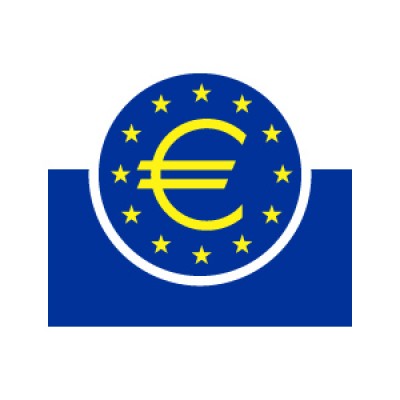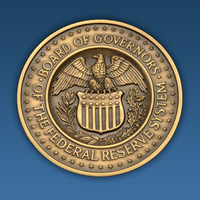The Fed's Tightrope: Trump vs. Powell in the Monetary Arena
April 18, 2025, 9:37 pm
In the high-stakes world of U.S. monetary policy, the Federal Reserve stands as a bulwark against economic chaos. Yet, this fortress is under siege. Former President Donald Trump has taken aim at Jerome Powell, the Fed's chair, calling for his ouster and demanding aggressive interest rate cuts. The tension between Trump and Powell encapsulates a broader struggle over economic direction, independence, and the very fabric of U.S. financial stability.
The Federal Reserve is like a ship navigating stormy seas. It must balance inflation and growth while avoiding the rocks of political pressure. Recently, that ship has faced turbulent waters, with Trump steering a course that threatens to upend the Fed's carefully charted path.
Trump's recent tirade against Powell is not just a personal vendetta; it’s a reflection of his broader economic philosophy. He believes that lower interest rates are the key to stimulating growth. In his view, the Fed has been too slow to act, especially compared to the European Central Bank, which has already cut rates in response to economic headwinds. Trump’s frustration is palpable. He claims Powell's termination "cannot come fast enough," signaling a desire for a more compliant Fed.
But Powell is no puppet. He has pledged to maintain the Fed's independence, a principle that is crucial for the credibility of U.S. monetary policy. This independence is not merely a bureaucratic nicety; it is the bedrock of trust in the financial system. Powell's recent remarks at the Economic Club of Chicago emphasized this point, drawing applause from business leaders who understand the importance of a non-partisan approach to monetary policy.
The stakes are high. The Fed's current interest rate sits between 4.25% and 4.50%. This rate has been stable since December, following a series of cuts aimed at countering economic uncertainty. However, Trump's policies, particularly his tariffs, have created a fog of uncertainty. Economists are now predicting a 45% chance of recession, a stark reminder of the delicate balance the Fed must maintain.
Trump's economic policies have been a double-edged sword. While he seeks to bolster growth through tax cuts and deregulation, his tariffs have raised the specter of inflation. Powell and other Fed officials are acutely aware of this dilemma. They must navigate a landscape where rising prices could force them to raise rates, even as growth slows. This is the tightrope the Fed walks, and it is fraught with peril.
The Fed's response to Trump's tariffs has been cautious. Powell has indicated that the central bank is waiting for greater clarity before making any significant policy shifts. This approach is prudent, as the economic impact of tariffs remains uncertain. Some Fed officials fear that job losses could come swiftly, necessitating rapid rate cuts. Others worry that the unpredictable nature of Trump's policies could destabilize inflation expectations, leading to higher rates.
In this high-stakes game, Trump has threatened to fire Powell, a move that would send shockwaves through the financial markets. Such a decision would undermine the Fed's independence and could lead to a loss of confidence among investors. The markets thrive on stability, and any hint of political interference could trigger a sell-off.
The relationship between Trump and Powell has been rocky from the start. Trump has often criticized Powell for being "too late and wrong" in his decisions. This animosity is not just personal; it reflects a fundamental disagreement over the role of the Fed in the economy. Trump wants a Fed that acts swiftly to support his agenda, while Powell is committed to a more measured approach.
As the Fed grapples with these challenges, it faces pressure from all sides. Business leaders want stability and predictability, while politicians like Trump demand action. The Fed's ability to maintain its independence will be tested in the coming months. If it can navigate this storm, it will reinforce its credibility. If not, the consequences could be dire.
In the end, the battle between Trump and Powell is about more than just interest rates. It is a struggle for the soul of U.S. monetary policy. The Fed must remain a guardian of economic stability, even as it faces political headwinds. The stakes are high, and the outcome will shape the economic landscape for years to come.
In this intricate dance of power, the Fed must remain steadfast. It must resist the siren call of political expediency and focus on its dual mandate: to promote maximum employment and stable prices. The future of the U.S. economy hangs in the balance, and the Fed's decisions will echo through the corridors of power and the lives of everyday Americans. The ship must stay the course, even as the storm rages on.
The Federal Reserve is like a ship navigating stormy seas. It must balance inflation and growth while avoiding the rocks of political pressure. Recently, that ship has faced turbulent waters, with Trump steering a course that threatens to upend the Fed's carefully charted path.
Trump's recent tirade against Powell is not just a personal vendetta; it’s a reflection of his broader economic philosophy. He believes that lower interest rates are the key to stimulating growth. In his view, the Fed has been too slow to act, especially compared to the European Central Bank, which has already cut rates in response to economic headwinds. Trump’s frustration is palpable. He claims Powell's termination "cannot come fast enough," signaling a desire for a more compliant Fed.
But Powell is no puppet. He has pledged to maintain the Fed's independence, a principle that is crucial for the credibility of U.S. monetary policy. This independence is not merely a bureaucratic nicety; it is the bedrock of trust in the financial system. Powell's recent remarks at the Economic Club of Chicago emphasized this point, drawing applause from business leaders who understand the importance of a non-partisan approach to monetary policy.
The stakes are high. The Fed's current interest rate sits between 4.25% and 4.50%. This rate has been stable since December, following a series of cuts aimed at countering economic uncertainty. However, Trump's policies, particularly his tariffs, have created a fog of uncertainty. Economists are now predicting a 45% chance of recession, a stark reminder of the delicate balance the Fed must maintain.
Trump's economic policies have been a double-edged sword. While he seeks to bolster growth through tax cuts and deregulation, his tariffs have raised the specter of inflation. Powell and other Fed officials are acutely aware of this dilemma. They must navigate a landscape where rising prices could force them to raise rates, even as growth slows. This is the tightrope the Fed walks, and it is fraught with peril.
The Fed's response to Trump's tariffs has been cautious. Powell has indicated that the central bank is waiting for greater clarity before making any significant policy shifts. This approach is prudent, as the economic impact of tariffs remains uncertain. Some Fed officials fear that job losses could come swiftly, necessitating rapid rate cuts. Others worry that the unpredictable nature of Trump's policies could destabilize inflation expectations, leading to higher rates.
In this high-stakes game, Trump has threatened to fire Powell, a move that would send shockwaves through the financial markets. Such a decision would undermine the Fed's independence and could lead to a loss of confidence among investors. The markets thrive on stability, and any hint of political interference could trigger a sell-off.
The relationship between Trump and Powell has been rocky from the start. Trump has often criticized Powell for being "too late and wrong" in his decisions. This animosity is not just personal; it reflects a fundamental disagreement over the role of the Fed in the economy. Trump wants a Fed that acts swiftly to support his agenda, while Powell is committed to a more measured approach.
As the Fed grapples with these challenges, it faces pressure from all sides. Business leaders want stability and predictability, while politicians like Trump demand action. The Fed's ability to maintain its independence will be tested in the coming months. If it can navigate this storm, it will reinforce its credibility. If not, the consequences could be dire.
In the end, the battle between Trump and Powell is about more than just interest rates. It is a struggle for the soul of U.S. monetary policy. The Fed must remain a guardian of economic stability, even as it faces political headwinds. The stakes are high, and the outcome will shape the economic landscape for years to come.
In this intricate dance of power, the Fed must remain steadfast. It must resist the siren call of political expediency and focus on its dual mandate: to promote maximum employment and stable prices. The future of the U.S. economy hangs in the balance, and the Fed's decisions will echo through the corridors of power and the lives of everyday Americans. The ship must stay the course, even as the storm rages on.


